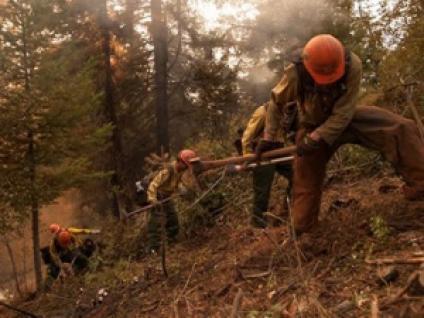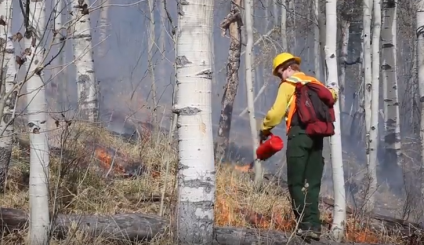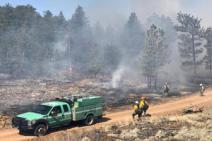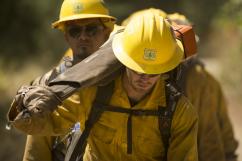
Fire Management Today
Founded in 1936, Fire Management Today has served the wildland fire community for more than 70 years as a clearinghouse for new techniques, technologies, and ideas. It has provided a forum open to anyone with anything useful to share with other wildland fire professional.

The Forest Service and other federal, tribal, state, and local government agencies work together to respond to tens of thousands of wildfires annually. Each year, an average of more than 73,000 wildfires burn about 7 million acres of federal, tribal, state, and private land and more than 2,600 structures.

Wildland Fire & Related Videos
Listen to inspiring stories from the men and women with careers in wildland fire and also learn how the Forest Service is managing wildland fires before, during and after they start to help restore our National Forest System lands.

Celebrating 80 years of smokejumping history fighting wildland fires.
Wildland fires are a force of nature that can be nearly as impossible to prevent, and as difficult to control, as hurricanes, tornadoes, and floods.
Wildland fire can be a friend and a foe. In the right place at the right time, wildland fire can create many environmental benefits, such as reducing grass, brush, and trees that can fuel large and severe wildfires and improving wildlife habitat. In the wrong place at the wrong time, wildfires can wreak havoc, threatening lives, homes, communities, and natural and cultural resources.
The Forest Service has been managing wildland fire on National Forests and Grasslands for more than 100 years. But the Forest Service doesn’t – and can’t – do it alone. Instead, the agency works closely with other federal, tribal, state, and local partners.
This is more important than ever because over the last few decades, the wildland fire management environment has profoundly changed. Longer fire seasons; bigger fires and more acres burned on average each year; more
extreme fire behavior; and wildfire suppression operations in the wildland urban interface (WUI) have become the norm.
To address these challenges, the Forest Service and its other federal, tribal, state, and local partners have developed and are implementing a National Cohesive Wildland Fire Management Strategy that has three key components: Resilient Landscapes, Fire Adapted Communities, and Safe and Effective Wildfire Response.
Learn how U.S. Forest Service fire managers respond to wildfires on National Forest System lands.
A Preparedness Guide for Firefighters and Their Families and U.S. Forest Service Supplement
These guides will help firefighters and their families prepare for, and respond to, a realm of planned and unplanned situations in the world of wildland firefighting.
These guides provide honest information, resources, and conversation starters to give you, the firefighter, helpful tools to prepare yourself and your family for the realities of performing as a wildland firefighter.
Preparedness Guide for Firefighters and Their Families
U.S. Forest Service Supplement
Resilient Landscapes
Fire Adapted Communities (FAC)
Safe and Effective Response














